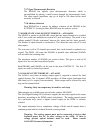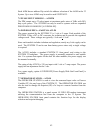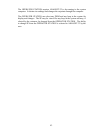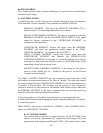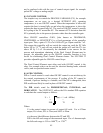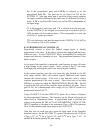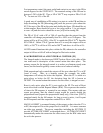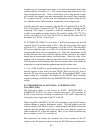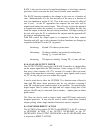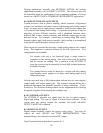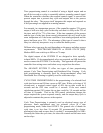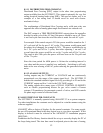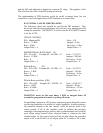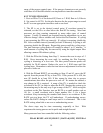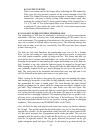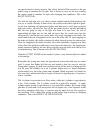49
RATE is also used to correct for rapid load changes, to slow large capacity
processes, and to overcome the slew rates of electric motor actuators.
The RATE function responds to the change in the error as a function of
time. Mathematically it is the first derivative of the error as a function of
time [see equation in section 8.1.4]. Thus if the error is steady the effect of
rate is zero. As the PV approaches the setpoint, the rate term will be
negative and reduce the control output. This will serve to slow the approach
to setpoint and reduce the tendency to overshoot. The higher the rate, the
faster the output is reduced, thus preventing overshoot. Too high a setting of
the rate will cause the PV to undershoot the setpoint and the approach will
be series of undershooting steps.
With PID control the output signal is a composite of the three control
functions and will vary as the constants for these functions are changed as
required to hold the PV to the SP. In general:
Increasing: K
p
and 1/T
I
reduce system errors.
Decreasing: T
I
reduces stability, but speeds the settling time.
Setting T
I
= 0, turns off reset.
Increasing: T
D
improves stability. Setting T
D
= 0, turns off rate.
8.1.8 ANAFAZE OUTPUT FILTER
The OUTPUT FILTER used by the ANAFAZE Controllers is a digital filter
on the output signal after the PID functions. It has a range of 0-255 levels
that gives a time constant of 0-127.5 seconds. It is used to filter out erratic
swings of the output due to extremely sensitive input signals, such as open
air T/C in a dry air gas oven or a turbine flow signal.
It can be used also to allow the SYSTEM 32 to function more effectively
than with PID alone. Some processes may be very sensitive, requiring a
wide PB, such that good control control is not possible. By increasing the
digital output filter to reduce the high and low output swings due to the
process, the PB may be narrowed (lower number -- higher gain) to obtain
good control.
The filter can also be used to forgive badly tuned PID loops and poorly
designed processes. It may also be used to reduce output noise [control
output cycling] when a large amount of derivative action is required.
8.1.13 REVERSE-DIRECT ACTION
The ACTION of the control OUTPUT with RESPECT to the PV is known
as REVERSE ACTION, if the OUTPUT INCREASES as the PV
DECREASES. If the OUTPUT INCREASES as the PV INCREASES, then
it is known as DIRECT ACTION.



